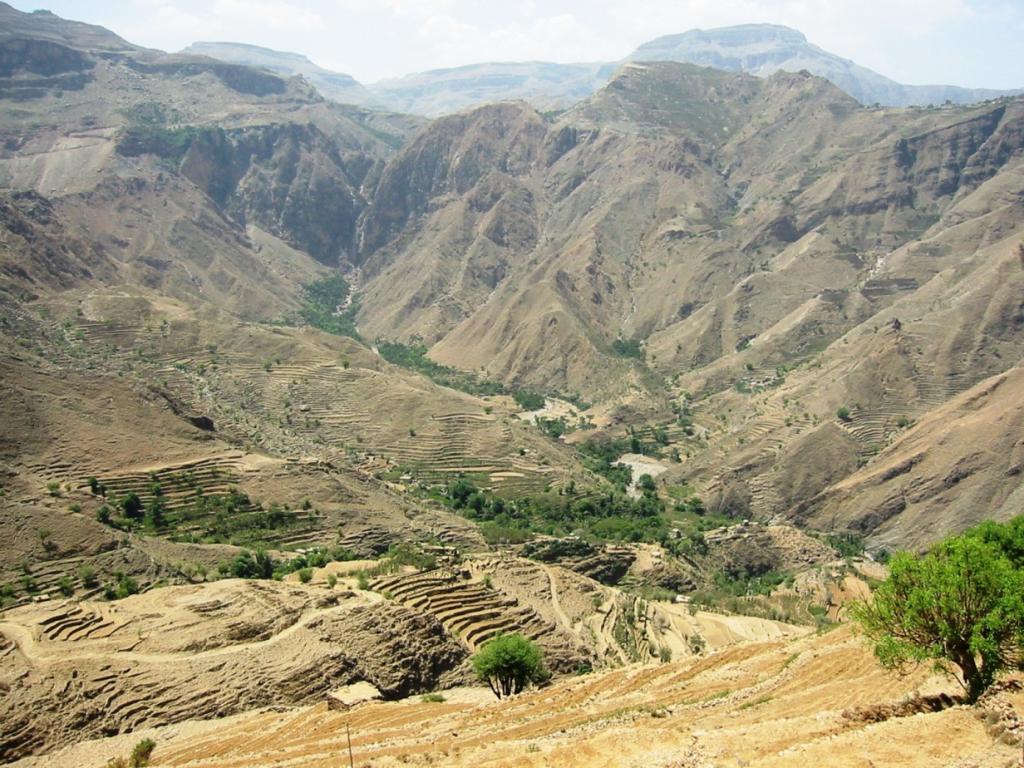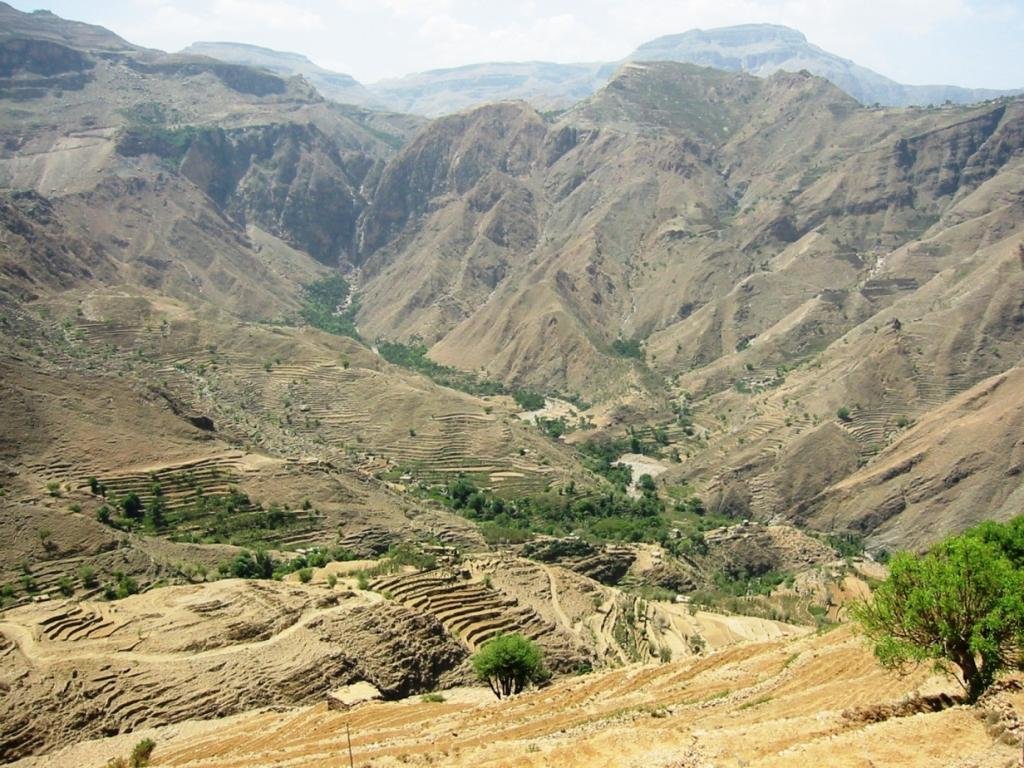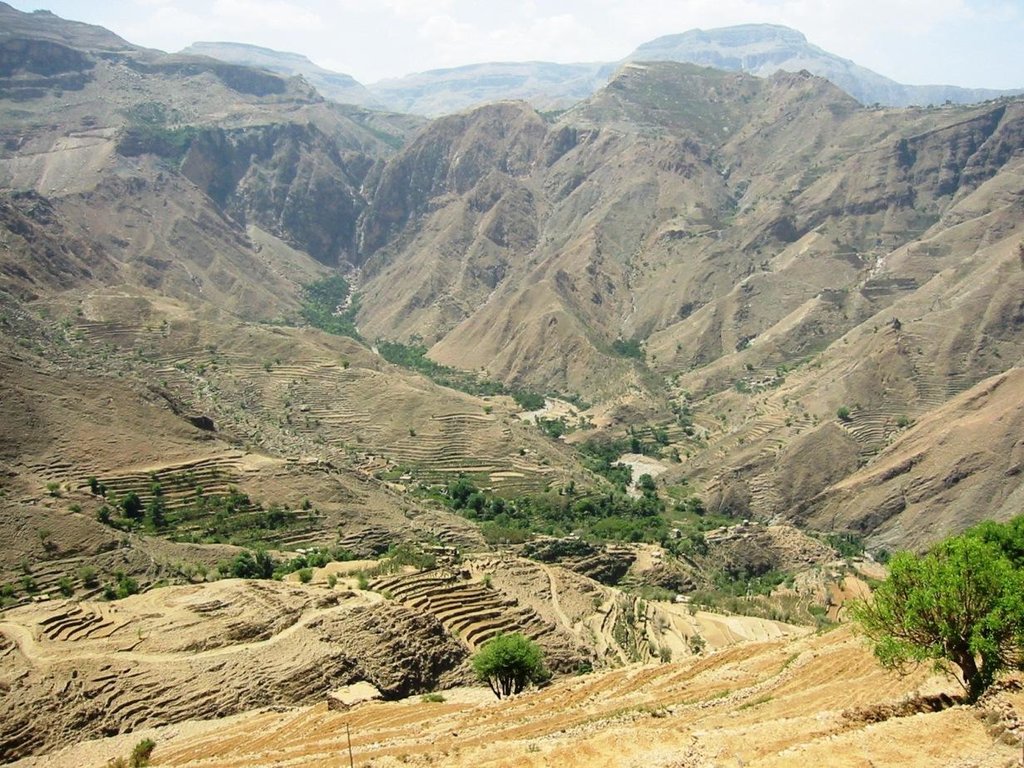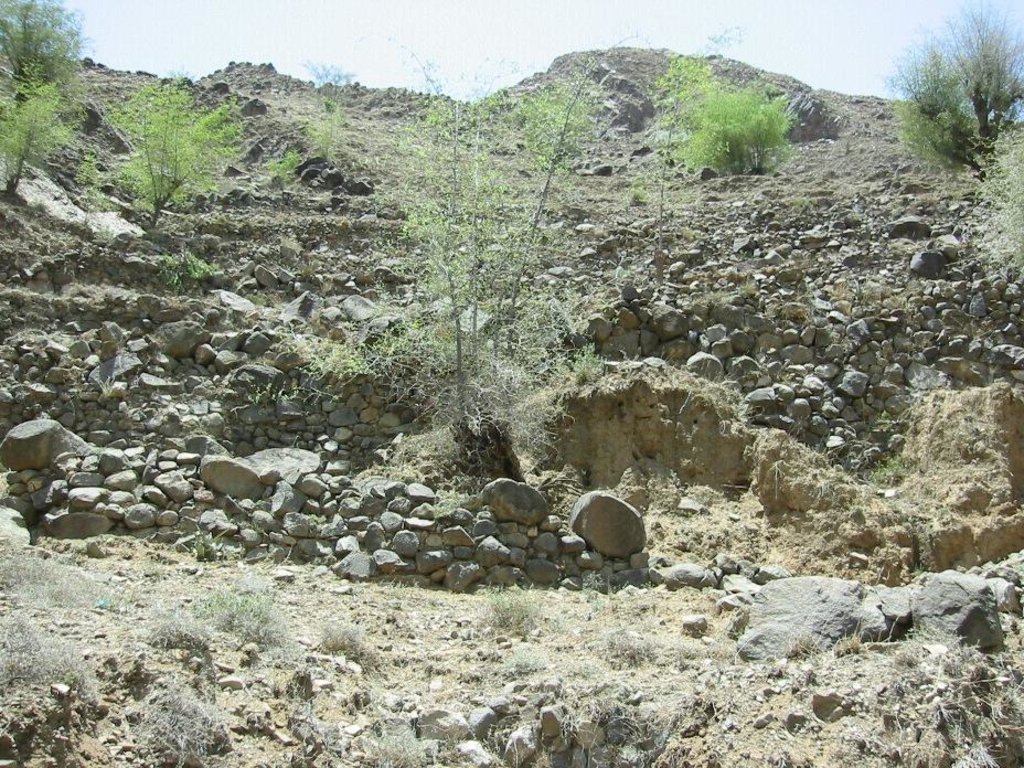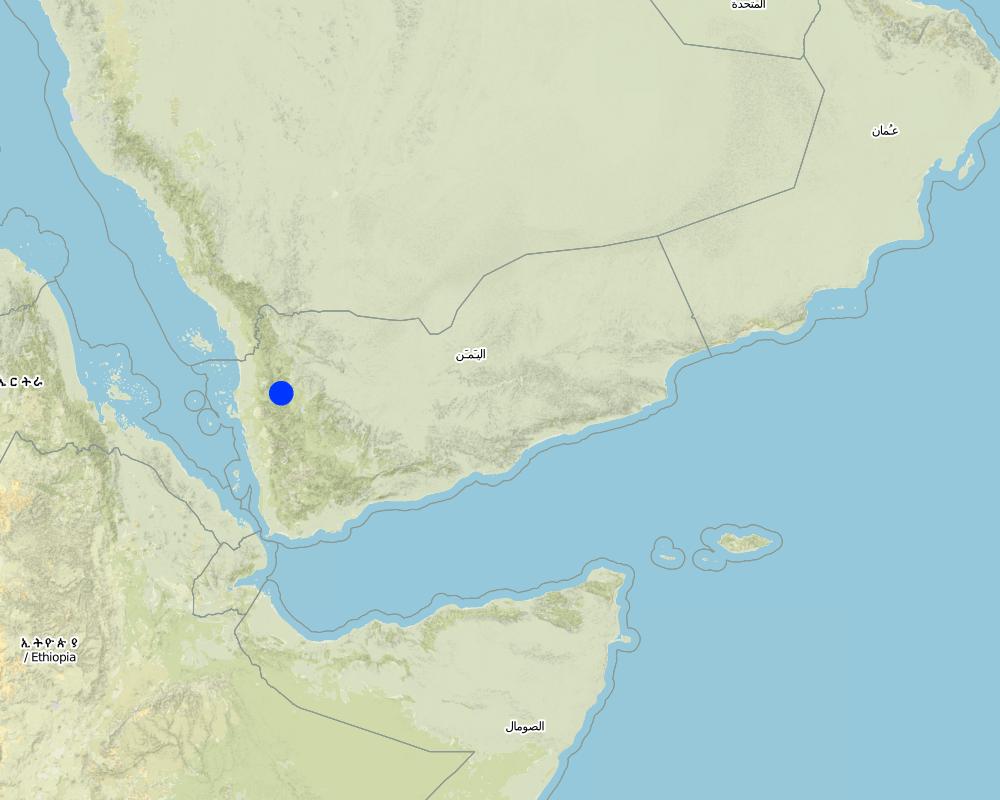leveled mountain terraces [Йемен]
- Создание:
- Обновить:
- Составитель: ahmed algalal
- Редактор: –
- Рецензент: Fabian Ottiger
المدرجات الجبلية المستوية
approaches_2621 - Йемен
Просмотреть разделы
Развернуть все Свернуть все1. Общая информация
1.2 Контактные данные специалистов и организаций, участвующих в описании и оценке Подхода
Специалист по УЗП:
Almashreki Mohammed
mashreki2000@yahoo.com
Agricultural Research and Extension Authority, AREA
Йемен
Название организации (-ий), содействовавших документированию/оценке Подхода (если применимо)
Agricultural Research and Extension Authority (AREA) - Йемен1.3 Условия, регламентирующие использование собранных ВОКАТ данных
Когда были собраны данные (на местах)?
09/02/2013
Составитель и ответственный/-ые специалист(-ы) согласны с условиями, регламентирующими использование собранных ВОКАТ данных:
Да
1.4 Ссылка (-и) на Анкету (-ы) по Технологиям УЗП
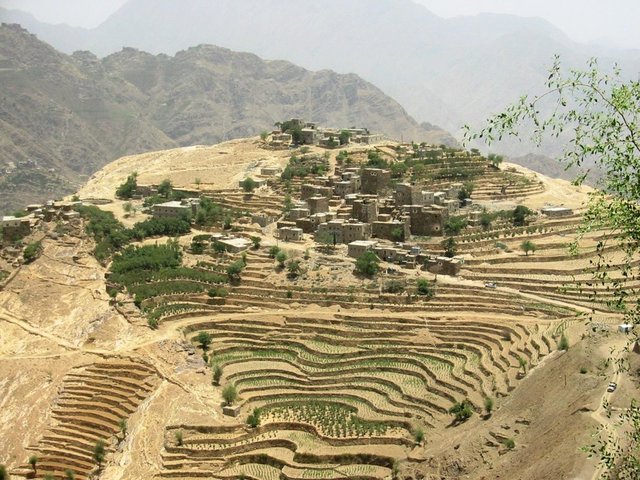
Flat Contour Terraces [Йемен]
Old flat terraces were built in accordance with the contour lines and surrounded by stones to create a suitable environment for the growth of crops, slope stabilization and reduce the risk of runoff and increasing water harvesting.
- Составитель: ahmed algalal
2. Описание Подхода УЗП
2.1 Краткое описание Подхода
organized collective action at a high pace for building agricultural terraces to improve livelihoods in resource-scarce regions in the ground
2.2 Подробное описание Подхода
Подробное описание Подхода:
Aims / objectives: A lot of agricultural land in mountain plains are mountain terraces were established in Yemen a long time ago and which constitute a method agriculturally traditionally unique since 2000 BC where it was built in steep slope places more than 60%, which works to change the shape of the slope (angle and length of the slope), which in turn leads to reduced Speed runoff, which helps to harvest water and protect the land from erosion.
The main objective of the establishment of the stands is to create a suitable environment for the growth of crops for the purpose of self-sufficiency due to a limited of arable land where invoked farmers veterans to create these terraces on the hillsides steep in order to increase the agricultural area and benefit from the runoff water to meet the crop water requirements and thereby increase productivity , in addition to the tower the terraces is working to change the shape of the slope and mitigate the damage resulting from the runoff, on the one hand.
Other works on the terraces to give a special character of beauty and greenery on the slopes and planted joy and hope in the hearts of the people and enhance their adherence to this tradition as long as shares in the stability and meet the needs of the population.
Terraces were built by the community in which concerted action all classes for the construction of terraced disease extraction of soil and collect stones and the end of the settlement of the soil and planting
2.3 Фотографии, иллюстрирующие Подход
2.5 Страна/ регион/ место, где применялся Подход
Страна:
Йемен
Административная единица (Район/Область):
Hajah Governorate
Более точная привязка места:
Kahlan Afar
Map
×2.7 Тип Подхода
- традиционная/ местная система землепользования, используемая коренным населением
2.8 Каковы цели/ задачи Подхода
The Approach focused mainly on SLM with other activities (Increase the agricultural area, water harvesting, increasing the productivity of the crop)
Creating a suitable environment for the growth of crops, prevent soil loss, minimize the risk resulting from the rapid runoff, water harvesting and increase soil moisture
The SLM Approach addressed the following problems: the lack of arable land, the soil water erosion, poverty
2.9 Условия содействующие применению Технологии/ Технологий в рамках Подхода или затрудняющие его
Наличие/ доступность финансовых ресурсов и услуг
- затрудняют
lack of money
Treatment through the SLM Approach: use of available resources in the region
Нормативно-правовая база (землевладение, права на земле- и водопользование)
- содействуют
The existing land ownership, land use rights / water rights greatly helped the approach implementation: did not occurs raised to the implementation process because the bleachers at the foundation and found out of nowhere and work on community-created en masse, however, has been the work of legislation to regulate the process and maintenance of irrigation terraces
- затрудняют
Water Rights
Treatment through the SLM Approach: Documentation of an agreement between the land users on the method of water distribution and irrigation priority so that it is the first former regime from top to bottom
Объем работ, доступность рабочей силы
- затрудняют
Lack of labor
Treatment through the SLM Approach: work collectively at all stages of the implementation of the technology
3. Участие и распределение ролей заинтересованных сторон
3.1 Заинтересованные стороны, участвующие в реализации Подхода и их роли
- местные землепользователи/ местные сообщества
All local community. Approach includes all parts of society, because the person who created the stands is all members of society without exception
Men have more experience and ability to work. Women do works that are commensurate with their ability
3.2 Участие местных землепользователей/ местных сообществ на разных стадиях реализации Подхода
| Участие местных землепользователей/ местных сообществ | Перечислите участников и опишите их вовлеченность | |
|---|---|---|
| инициирование/ мотивация | нет | |
| планирование | нет | |
| выполнение | нет | |
| мониторинг/ оценка | нет | |
| Research | нет |
3.4 Принятие решений по выбору Технологии/ Технологий УЗП
Укажите, кто принимал решение по выбору применяемой Технологии/ Технологий:
- исключительно землепользователи (по собственной инициативе)
Поясните:
It is originally an ancient technique and exist but need to be rebuilt
Decisions on the method of implementing the SLM Technology were made by by land users* alone (self-initiative / bottom-up)
4. Техническая поддержка, повышение компетенций и управление знаниями
4.1 Повышение компетенций/ обучение
Проводилось ли обучение землепользователей/ других заинтересованных лиц?
Нет
4.3 Институциональная (организационная) поддержка
В ходе реализации Подхода были ли организованы новые институциональные структуры или поддержаны уже существующие?
- нет
4.4 Мониторинг и оценка
Являются ли мониторинг и оценка частью Подхода?
Да
Комментарии:
bio-physical aspects were ad hoc monitored by land users through observations; indicators: wise and dignitaries with the correct mind.
technical aspects were ad hoc monitored by land users through measurements; indicators: wise and dignitaries with the correct mind.
socio-cultural aspects were regular monitored by land users through measurements
economic / production aspects were ad hoc monitored by land users through observations
no. of land users involved aspects were regular monitored by other through measurements
management of Approach aspects were regular monitored by other through measurements
There were no changes in the Approach as a result of monitoring and evaluation
There were no changes in the Technology as a result of monitoring and evaluation
4.5 Научные исследования
Были ли научные исследования частью Подхода?
Нет
5. Финансирование и внешняя материальная поддержка
5.1 Годовой бюджет мероприятий по УЗП в рамках Подхода
Если точный годовой бюжет неизвестен, укажите примерный диапазон затрат:
- 2000-10000
Комментарий (например, основные источники финансирования/ ключевые доноры):
Approach costs were met by the following donors: local community / land user(s) (Local community): 100.0%
5.4 Кредитование
Предоставлялись ли в рамках Подхода кредиты на мероприятия УЗП?
Нет
6. Анализ влияния и заключительные положения
6.1 Влияние Подхода
Сумел ли Подход помочь землепользователям внедрить и поддерживать технологии УЗП?
- Нет
- Да, немного
- Да, умеренно
- Да, существенно
teamwork is one of the most important elements of sustainable land and protect it from deterioration and this the approach, which followed by the old farmers even continued the stands terraces to this day.
Did other land users / projects adopt the Approach?
- Нет
- Да, немного
- Да, умеренно
- Да, существенно
Did the Approach lead to improved livelihoods / human well-being?
- Нет
- Да, немного
- Да, умеренно
- Да, существенно
Did the Approach help to alleviate poverty?
- Нет
- Да, немного
- Да, умеренно
- Да, существенно
The increase in the agricultural area, water harvesting areof the most essential ingredients to alleviate poverty.
6.2 Основные причины, побуждающие землепользователей внедрять УЗП
- рост продуктивности
Increase the amount of production
- экологическая сознательность
- The creation of new agricultural land
- Stability and improve the people's livelihood
6.3 Долгосрочная устойчивость мероприятий в рамках Подхода
Могут ли землепользователи самостоятельно (без внешней поддержки) продолжать применение того, что было реализовано в рамках Подхода?
- да
Если да, опишите как:
Terraces built without support and continued to the present day
6.4 Сильные стороны/ преимущества Подхода
| Сильные стороны/ преимущества/ возможности по мнению составителя или других ключевых специалистов |
|---|
| Improve the livelihoods and the stability of society (How to sustain/ enhance this strength: Continuing to maintenance operations) |
| A tributary of real teamwork in advancing progress and achieve the desired goal, namely, agricultural terraces and teamwork lead to the strengthening of the social fabric and the bonds of love and assistance among themselves (How to sustain/ enhance this strength: Community awareness and land users in particular, the importance of the continuation of collective action to ensure the sustainability and continuity of the stands that need to unite everyone to preserve them for future generations.) |
| Take advantage of all the resources available in the region in the process of construction of terraces traditional methods and in accordance with the natural conditions and topography of the region |
7. Справочные материалы и ссылки
7.1 Методы сбора/источники информации
- выезды на места, полевые обследования
- опросы землепользователей
7.2 Ссылки на опубликованные материалы
Название, автор, год публикации, ISBN:
Report of the environmental resources available in the Afar region Kahlan (Mashreki, 2003)A study of land degradation in the Republic of Yemen (Yemen - ACSAD, 2002
Где опубликовано? Стоимость?
Agricultural Research and Extension Authority, AREAAgricultural Research and Extension Authority, AREA
Название, автор, год публикации, ISBN:
A study of land degradation in the Republic of Yemen (Yemen - ACSAD, 2002)
Где опубликовано? Стоимость?
Agricultural Research and Extension Authority, AREA
Ссылки и модули
Развернуть все Свернуть всеСсылки

Flat Contour Terraces [Йемен]
Old flat terraces were built in accordance with the contour lines and surrounded by stones to create a suitable environment for the growth of crops, slope stabilization and reduce the risk of runoff and increasing water harvesting.
- Составитель: ahmed algalal
Модули
Нет модулей


